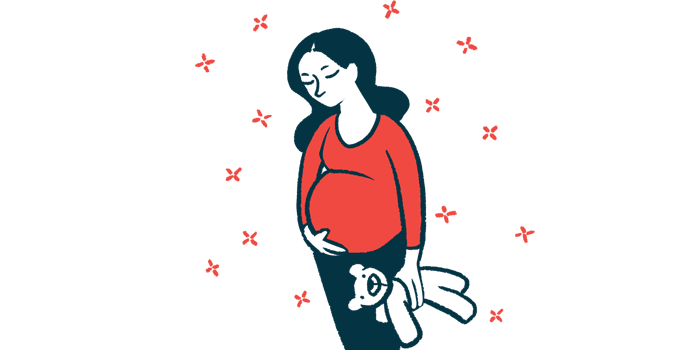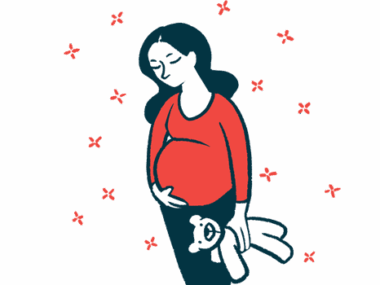3rd rare case reported of Cushing’s disease in twin pregnancy
Study highlights challenge of diagnosing Cushing's disease during pregnancy
Written by |

Researchers in Japan have reported what they say is the third case of Cushing’s disease in a woman pregnant with twins. The disease was mostly resolved with surgery after she gave birth.
While there were signs suggestive of Cushing’s disease during her pregnancy, the woman was only formally diagnosed after delivery, when she started to show some Cushing’s symptoms and lab work confirmed disease-specific abnormalities.
“Diagnosis of CD [Cushing’s disease] during pregnancy is challenging,” researchers wrote, adding that “even if CD is identified during pregnancy …, it is recommended to postpone surgery.”
The case study, “Cushing’s disease with twin pregnancy and diabetes mellitus: a case report and literature review,” was published in the Endocrine Journal.
Endogenous Cushing’s syndrome comprises a group of disorders characterized by excessive production of the cortisol hormone, which is typically released by the adrenal glands, which sit on top of the kidneys.
Pregnancy rare in women with endogenous Cushing’s syndrome
“Pregnancy is rare in women diagnosed with [endogenous Cushing’s syndrome],” as high cortisol levels tend to interfere with ovulation and conception, the researchers wrote.
Still, left untreated, Cushing’s in pregnancy is associated with an increased risk of complications for both the mother and fetus.
Most cases of endogenous Cushing’s syndrome in pregnancy are caused by adrenal adenomas, or benign tumors in the adrenal glands. In rare cases, the condition may be due to a tumor in the brain’s pituitary gland, in which case it is called Cushing’s disease. Pituitary tumors can release high amounts of the adrenocorticotropic hormone (ACTH) that instructs the adrenal glands to release cortisol into the bloodstream.
Even rarer is the occurrence of Cushing’s disease in twin pregnancies, as “only two cases […] with twin pregnancies have been reported,” the researchers wrote.
Now, a team of researchers in Japan described what they believe is the third case of Cushing’s disease in a woman pregnant with twins.
The 38-year-old Japanese woman was found to have hypothyroidism, or insufficient thyroid hormone production, while she was given infertility treatments. She received appropriate medication for hypothyroidism.
MRI revealed mass in pituitary gland
At the time, an MRI scan revealed a mass in the pituitary gland that was thought to not secrete hormones, including ACTH. Given that it didn’t seem to pose a major threat, no surgery was conducted. A second MRI some time later showed the mass had not grown, and the woman was kept under surveillance.
In the meantime, she was also found to have diabetes, but was not given medication for it.
A few months later, the woman became pregnant with twins and was referred to the researchers’ outpatient clinic at 14 weeks of gestation due to diabetes worsening with pregnancy. She was prescribed treatment for her diabetes, and continued her hypothyroidism medication.
At the time, she did not have Cushing’s disease symptoms, such as “visual field deficits, headaches, or physical findings …, such as a moon face [round, puffy face] or central obesity,” the researchers wrote.
However, the presence of a pituitary tumor led the researchers to measure ACTH and cortisol at 21 weeks of gestation. They found higher-than-normal levels of both hormones in the blood and elevated cortisol levels in the urine.
The woman also did not respond to a low-dose dexamethasone suppression test, commonly used to diagnose Cushing’s. In normal conditions, administration of a low dose of the corticosteroid dexamethasone results in a reduction in blood ACTH and cortisol levels, but in Cushing’s patients, this has no effect on such levels.
Another MRI showed no change in the size of the pituitary tumor.
Doctors may have missed opportunity to diagnose Cushing’s during pregnancy
Still, the clinicians did not formally diagnose her. “We may have missed the opportunity to diagnose CD during pregnancy,” the team wrote.
The woman gave birth at 37 weeks and six days via vaginal delivery to twin girls, who received care in the neonatal intensive care unit for a short period of time. Their development continued without incident.
A few months later, the woman developed dry, papery skin, and further tests measuring blood cortisol and ACTH levels, as well as the dexamethasone suppression test, confirmed a Cushing’s disease diagnosis.
She underwent transsphenoidal pituitary surgery, a minimally invasive surgery to remove pituitary tumors and the first-line treatment for Cushing’s disease. After surgery, her condition was partially resolved. While blood cortisol levels were within normal, ACTH levels remained above normal.
She was weaned off her medication for hypothyroidism without complications, and no longer showed signs of diabetes.
“We report the third case of CD diagnosed in a twin pregnancy complicated by [diabetes],” the researchers wrote, adding “it is important to confirm a diagnosis of CD as early as possible and provide the necessary preconception care and treatment to ensure a safe environment for the fetus…. Further studies are necessary to establish the optimal pharmacotherapy of CD during pregnancy.”








